Daniel Hölzl*
Bait
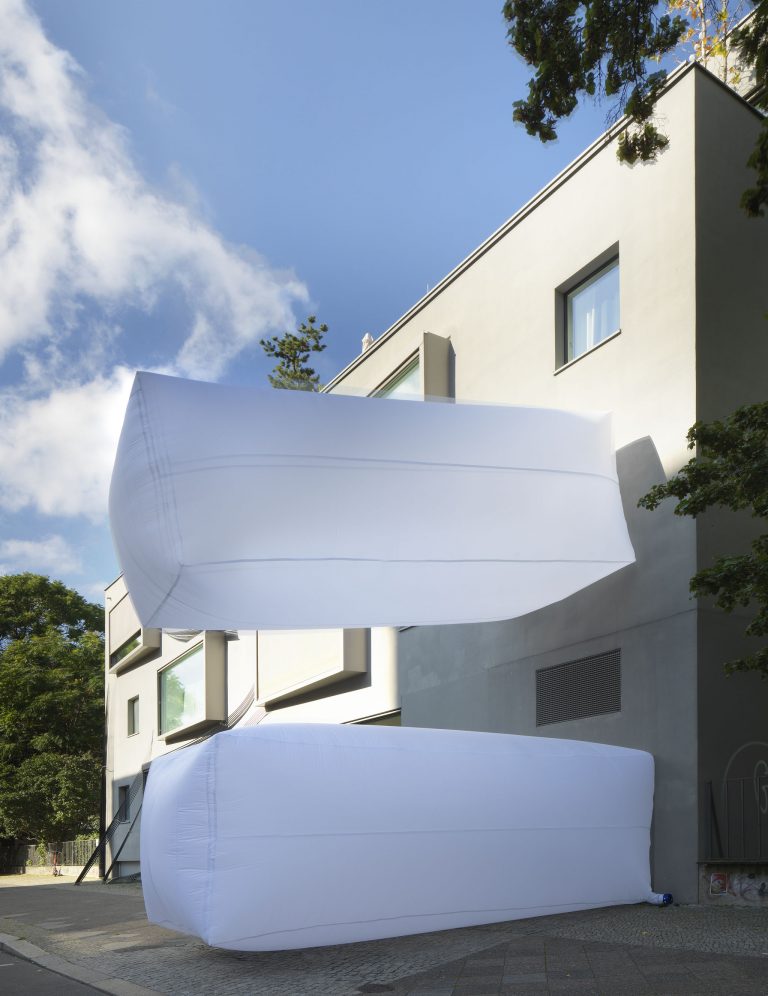
Daniel Hölzl,, Aufzug, 2021. Copyright the Artist. Courtesy the Artist. Photo: Jens Ziehe
For me art climaxes in tiny different moments offering to shift our relationships with the systems within we operate.
Daniel Hölzl
DITTRICH & SCHLECHTRIEM is pleased to introduce the work of DANIEL HÖLZL (b. Schwaz, Austria, 1994). In his first presentation with our gallery, Hölzl creates a site-specific performative-sculptural installation on and extending off the facade of the gallery. The project, titled BAIT, will be on view day and night for the duration of the Gallery Weekend *Discoveries programming.
The two main elements of the installation, inflated parachute silk and contorted carbon fiber poles, respond to the building’s distinctive architecture while raising concerns of hierarchy, prey, temporality, and potential.
Projecting from the ground-floor freight elevator door is an exact full-scale replica of its interior space, tailored out of white parachute silk. This form is then mirrored and hung directly above it, installed from the second-floor window. Each form is filled with air and programmed to inflate and deflate. Each entity moves in synchronized alternation, in response to each other.
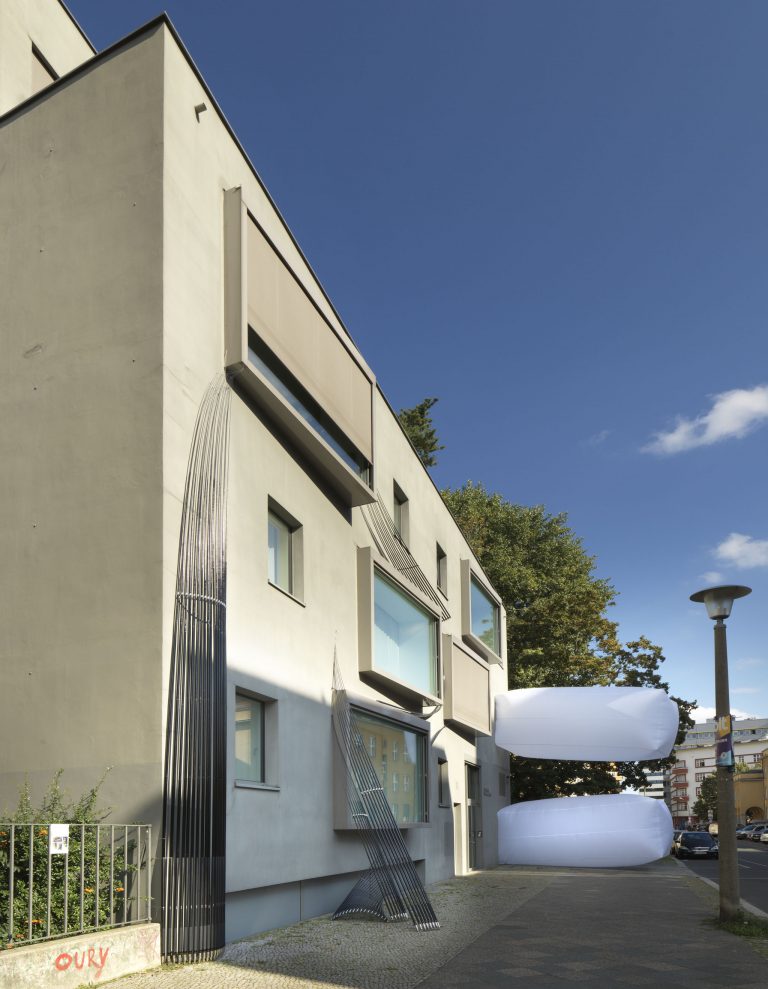
Daniel Hölzl, Bait, 2021. Installation view, Dittrich&Schlechtriem. Photo: Jens Ziehe
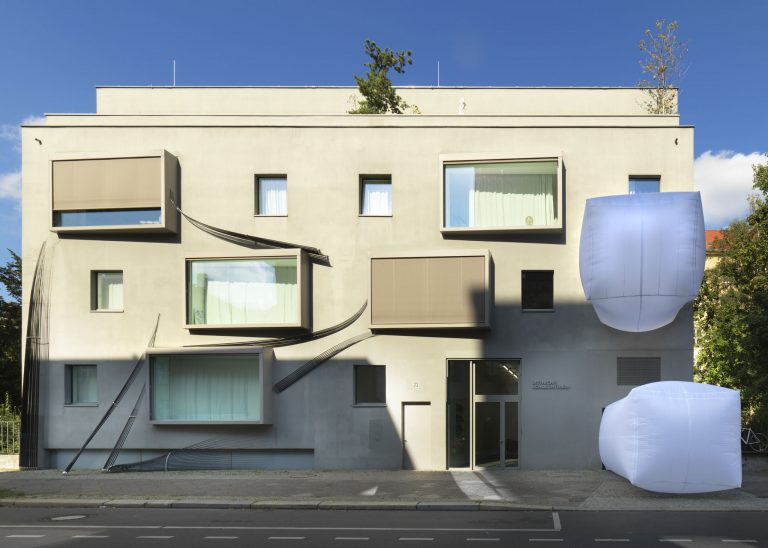
Daniel Hölzl, Bait, 2021. Installation view, Dittrich&Schlechtriem. Photo: Jens Ziehe
Daniel Hölzl’s work consistently builds on the phenomenological legacies of Minimalist and post-conceptual sculpture and installation practices from the 20th century. He belongs to the first generation of artists for whom the internet has been part of the social ambient and not an emerging invention. This fact has enabled him to incorporate in his works a subtle but crucial cybernetic understanding of the dynamics of built environments and processes as living entities that are responsive to their surroundings.
Mohammad Salemy, The New Centre of Research & Practise
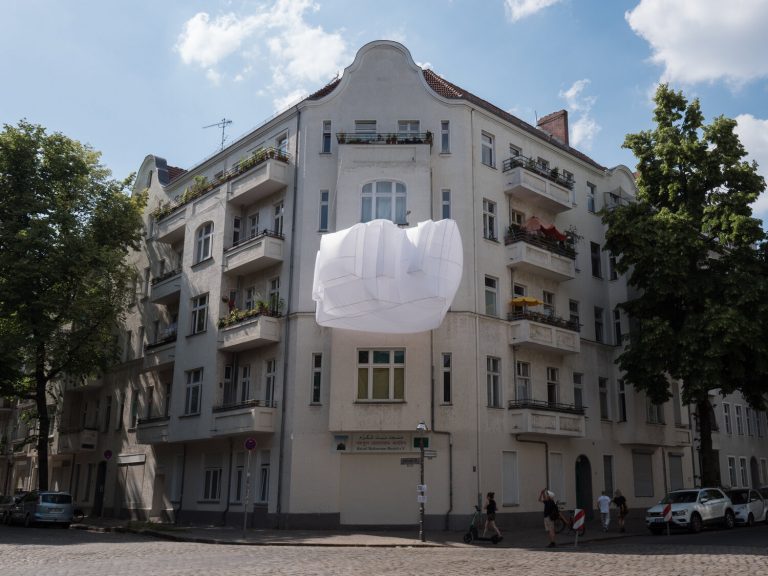
Daniel Hölzl, Aushang, 2021. Copyright the Artist. Courtesy the Artist
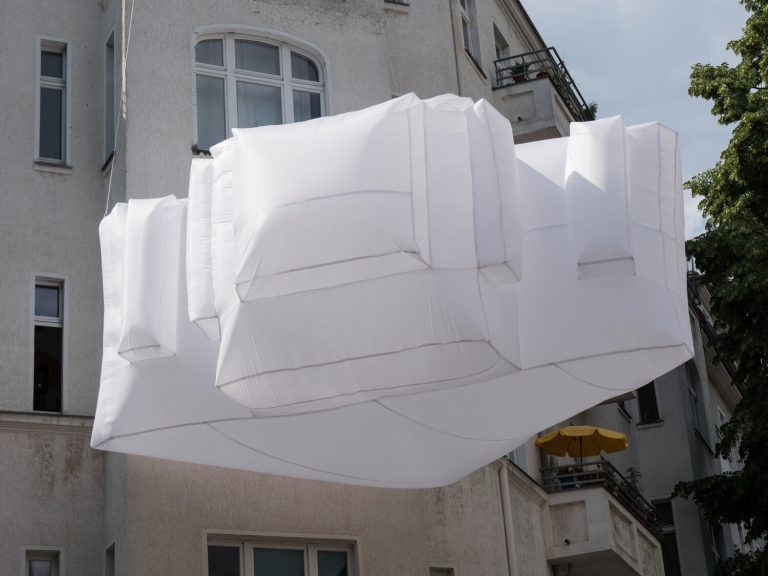
Daniel Hölzl, Aushang, 2021. Copyright the Artist. Courtesy the Artist
Extending from the main gallery entrance and street level and overhanging upper gallery windows are series of carbon fiber poles. Fixed in place with magnets and ropes, these structures reach away from the architecture, then curve again inward, bending into the building, augmented by their potential.
In Bait, Hölzl continues to investigate the dynamics of built environments. Employing carefully selected materials, the artist focuses on the transience of every moment while connecting the installation to the site and its visitors. The objects relate and respond to their surroundings, obtaining social awareness and performing as we do, jointly shaped by our physical and increasingly digital infrastructures.
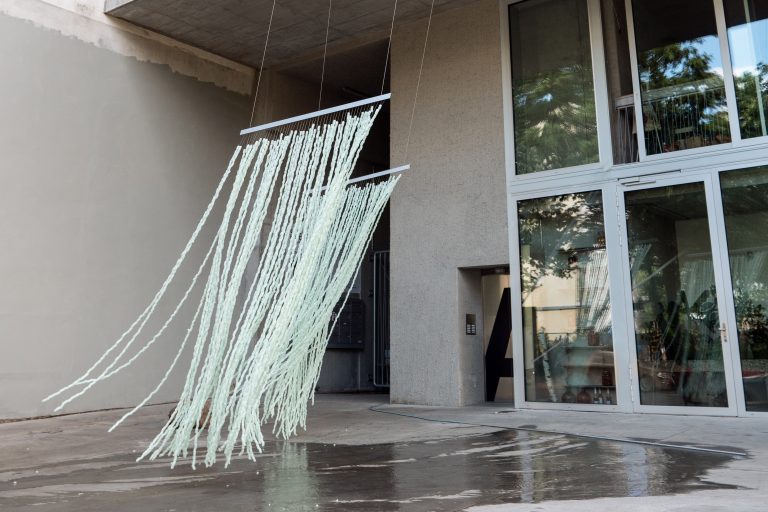
Daniel Hölzl, Zeitfenster | cycle no.four, 2020, Berlin, Copyright the Artist. Daniel Hölzl, Courtesy the Artist
Julian Charrière
Soothsayers
Charrière’s work hovers between dimensions, both documentary and dream, questioning in which dimension the reality of the image may lie, or if it lies in one at all.
Scott MacKenzie, 2020
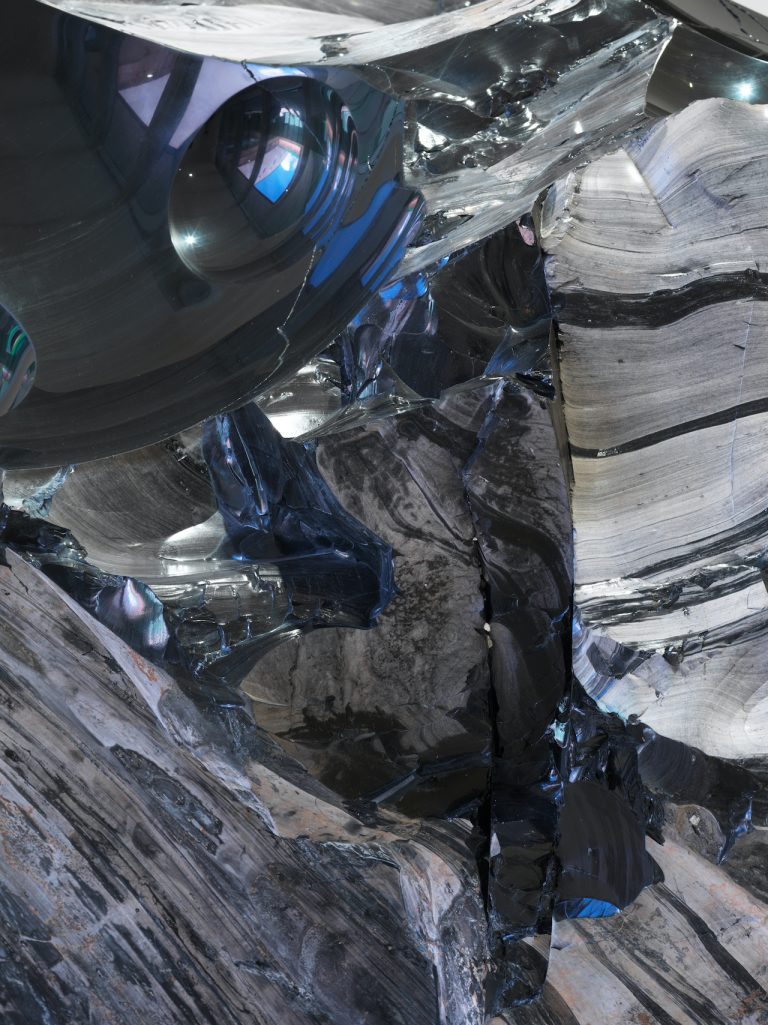
Julian Charrière, Thickens Pools Flows Rushes Slows (detail), 2020, Installation View, Towards No Earthly Pole 2020 Aargauer Kunsthaus Aarau, Switzerland, Copyright The Artist; VG Bild Kunst Bonn, Germany, Photo By Jens Ziehe
DITTRICH & SCHLECHTRIEM is pleased to announce our fifth solo show with Julian Charrière, titled Soothsayers, opening on the occasion of Berlin Gallery Weekend, September 15-19 from 11 AM to 7 PM. The exhibition is on view from September 15 through November 27, 2021. Com- mended as one of the greatest artists of his generation, Charrière continues to explore post-romantic constructions of “nature,” staging tensions between geological times- cales and those relating to humankind. In Soothsayers, the viewers are confronted with an installation focused on materiality and light that induces a meditative, trance-like state. By way of these sensory enhancements, they are prompted to explore the depths of their inner beings and a complex geological matrix.
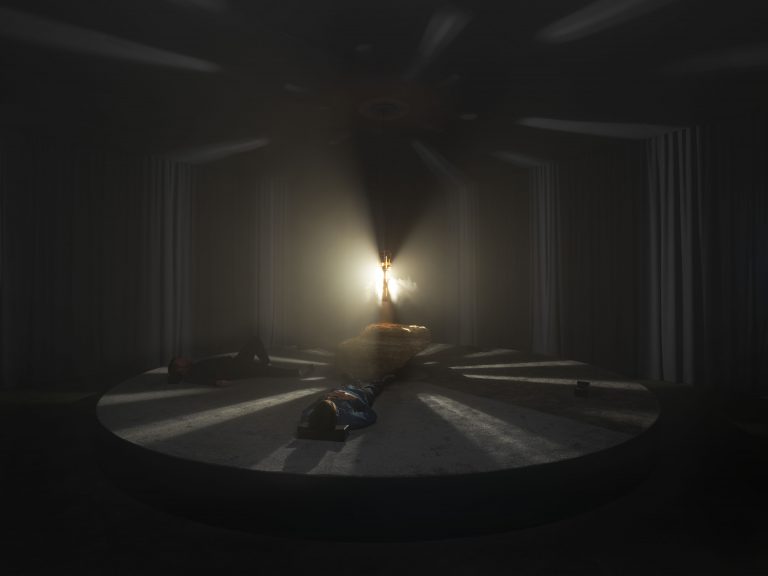
Julian Charrière, Vertigo, 2021. Photo Jens Ziehe
Faithful to the heritage of conceptual art, fascinated by Land Art and especially by Robert Smithson, influenced by the teaching of Olafur Eliasson, Julian Charrière sets in motion processes that become works, creates works whose final outcome is not predetermined, placing them at the very core of one of the main questions that drive his oeuvre: the concept of Time.
Nicole Schweizer, 2014
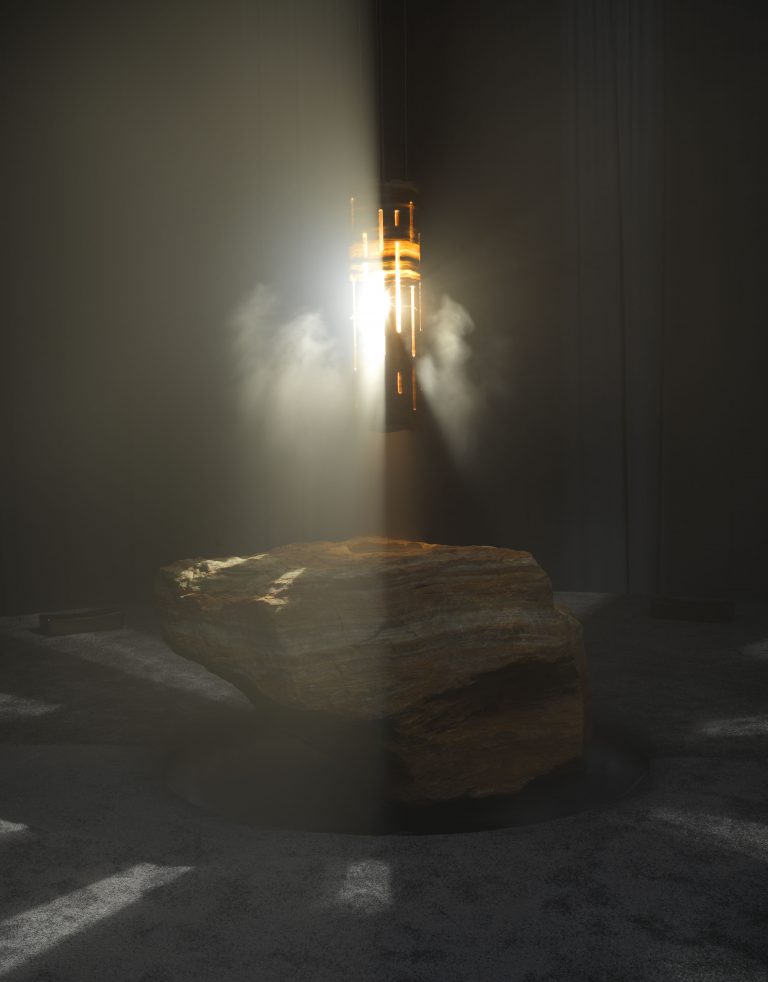
Julian Charrière, Vertigo, 2021. Photo Jens Ziehe
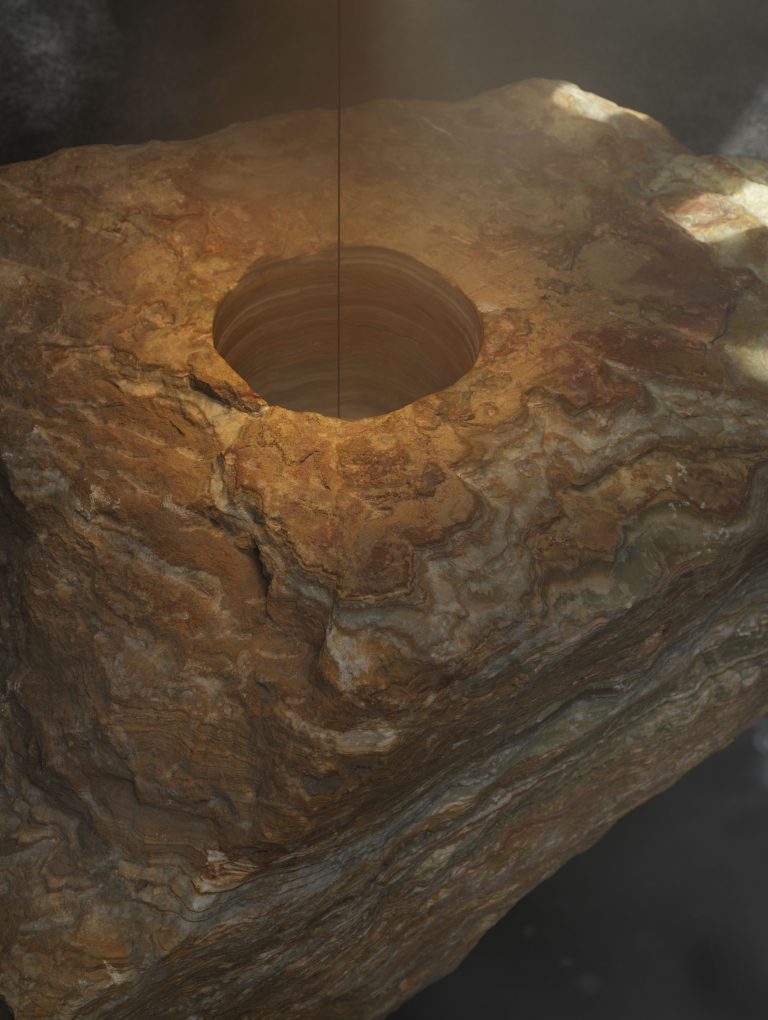
Julian Charrière, Vertigo, 2021. Photo Jens Ziehe
September also marks the celebration of the 10-year anniversary of DITTRICH & SCHLECHTRIEM, which opened in 2011, notably with Charrière’s first solo exhibition, Horizons.
Soothsayers develops Julian Charrière’s interest in disturbing collisions between earth systems and applied science (as well as hallucinatory night-club aesthetics). Through an immersive display that comprises two new sculptures, the exhibition stages visions of world(s) near and far that oscillate between Traum and trauma.
Soothsaying is the ancient art of prophecy. In the exhibition’s title piece, Charrière re-imagines one of its classic methods—divination through the reading of entrails (haruspicy)—through a poetics of stone: This major new work features a large block of coal encased within a steel plinth, as if the former had grown inside the latter’s three-dimensional grid. While its irregular shape disturbs the metal structure’s rational form, the coal lump—recalling something between tuber and tumor—also appears com- pressed by it. In symbolic terms (qua augury) its black mass stands for the guts of the earth. More to the point, as the grid indicates, it is modernity’s bowels; a fact that must be read more deeply if we are to extract our culture from it. To this end, Charrière’s coal bears a carved hollow, into which visitors may insert their heads. All the better to hear their own voice, or attempt to see in the dark …
Julian Charrière is one of the most innovative and promising young Swiss artists of his generation. Charrière immediately stood out on the contemporary art scene as a modern explorer on a conceptual artistic quest that combines different disciplines, including geology, archaeology, physics and history.
Press release, MASI Lugano, LAC Lugano Arte e Cultura, 2020
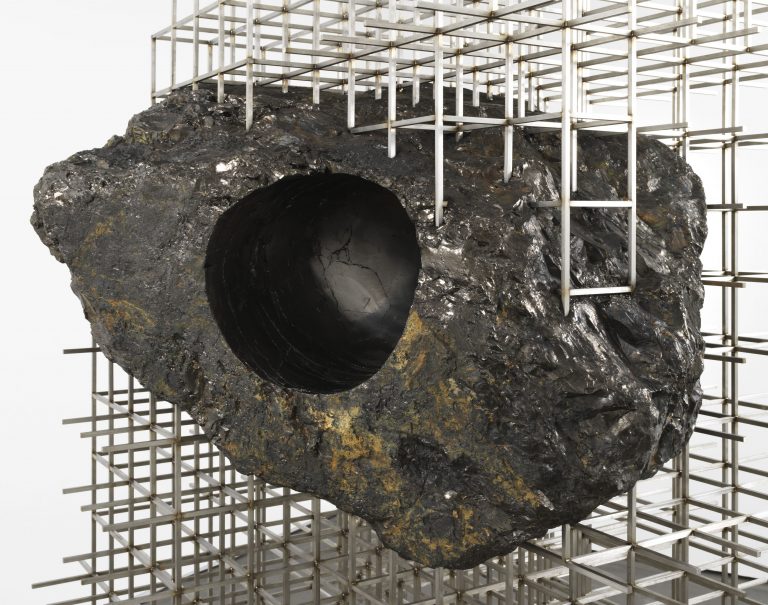
Julian Charrière, Soothsayer, 2021. Photo Jens Ziehe
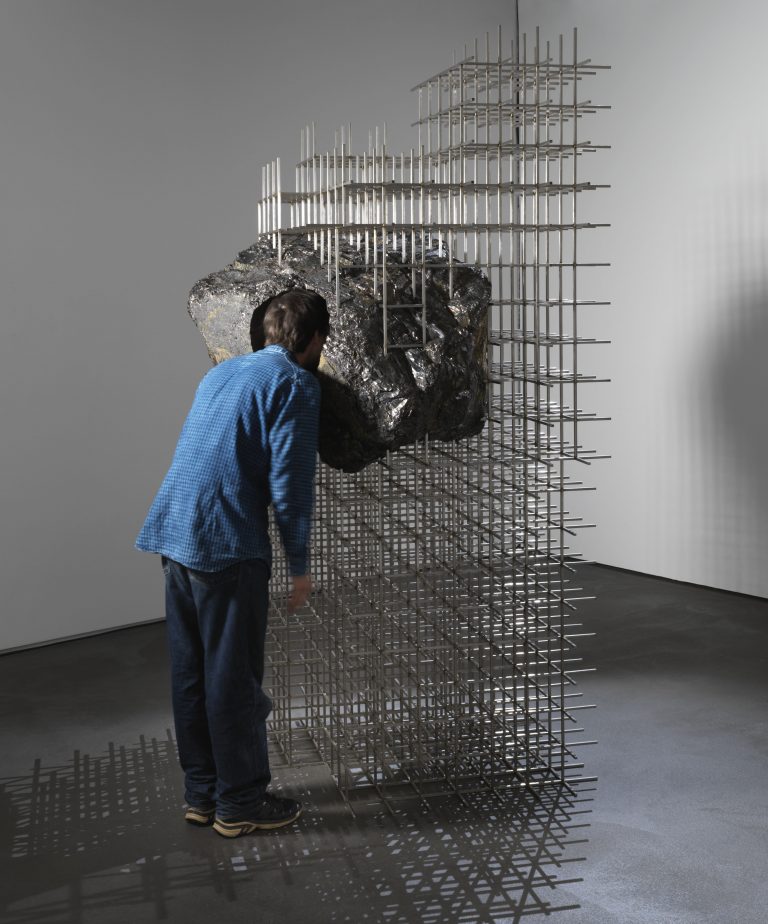
Julian Charrière, Soothsayer, 2021. Photo Jens Ziehe
The second part of the exhibition in an immersive scenography, centered around an igneous dream-machine (Vertigo, 2021). Set amid an ensemble of curtains, haze and a fountain, Charrière remixes the tripped-out spirit of Brion Gysin’s original device (1962) for our twenty-first-century crisis. The first historical object was a rotating metal cylin- der out of which beams of light were shot through various apertures. The visual stimuli given out by its stroboscopic flickering (meant to be viewed through closed eyelids) was supposed to produce an alpha wave mental state in the user. Building on such play of flash and darkness, Charrière’s stone version incorporates an architectural element to facilitate group sleep. Here, in the round, users must rest their heads on mineral pillows in order to receive the vision—a hard or otherwise disciplined version of repose and revelation in tune with our times.
Soothsayers circles around dream states and world pictures enabled by the strange light of extractive moder- nity. Throughout, Charrière’s exhibition stages a confrontation between the hardness of stone and the porosity of our imagination.
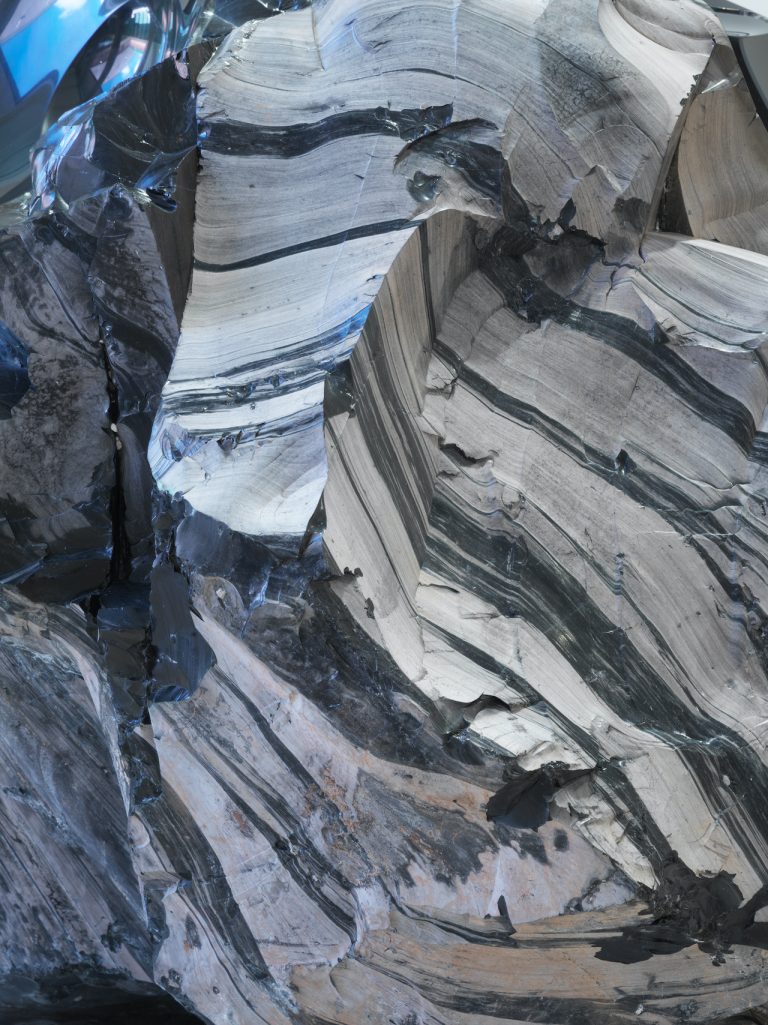
Julian Charrière, Thickens Pools Flows Rushes Slows (detail), 2020, Installation View, Towards No Earthly Pole 2020 Aargauer Kunsthaus Aarau, Switzerland, Copyright The Artist; VG Bild Kunst Bonn, Germany, Photo By Jens Ziehe
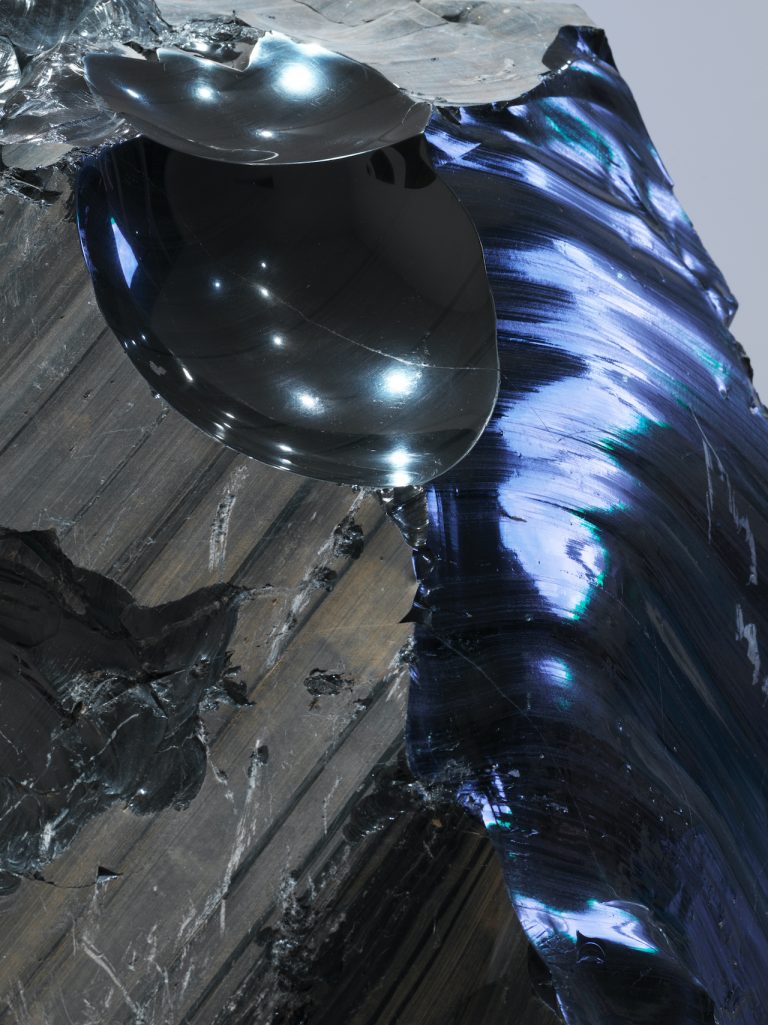
Julian Charrière, Thickens Pools Flows Rushes Slows (detail), 2020, Installation View, Towards No Earthly Pole 2020 Aargauer Kunsthaus Aarau, Switzerland, Copyright The Artist; VG Bild Kunst Bonn, Germany, Photo By Jens Ziehe
The above are observations by Nadim Samman. The exhibition catalogue published by the gallery and available this October features all images and installation views alongside an expanded exhibition essay by Samman.
Following a milestone year, which included a solo show with Aargauer Kunsthaus, Aarau, and his first major solo exhibition in America at the Dallas Museum of Art, Texas, Charrière will exhibit at the Centre Pompidou, Paris, as a nominated artist for the Prix Marcel Duchamp 2021. The exhibition will remain on view through 4 January 2022, with the winner announced on 18 October, 2021.
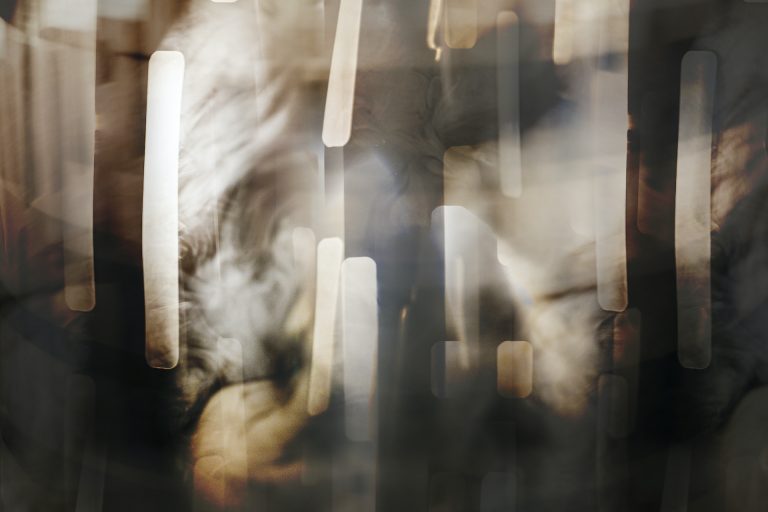
Soothsayers. Copyright The Artist, VG Bild-Kunst Bonn, Germany
